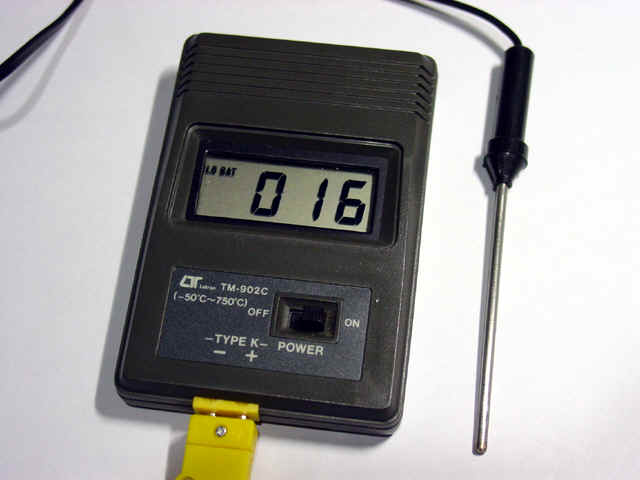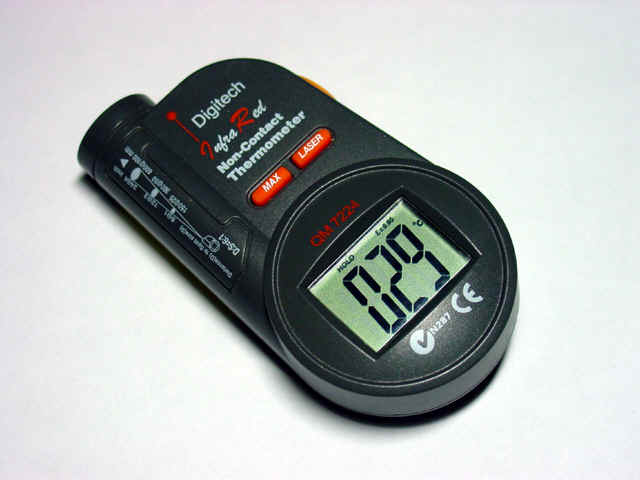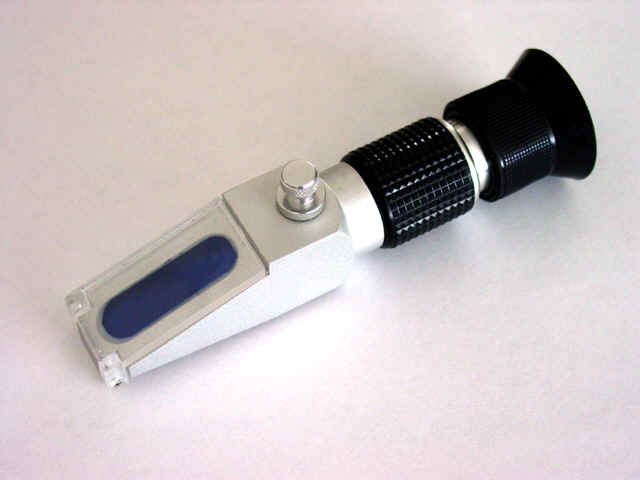 |
| OwenDuffy.net |
|
Why do you use baking powder instead of self raising flour?
Why are quantities usually specified in mass (weight), eg kg and g rather than cups and teaspoons?
How to measure the temperature of oven, product in a pot etc?
How to measure the Brix, Total Soluable Solids (TSS) or sugar (sucrose) content of product?
Modern baking powder is no-fuss, it contains two agents, and alkali and an acid and in the presence of water, at high temperature they react to release carbon dioxide which aerates the baked product causing it to rise and making it lighter.
Although baking powder in small quantities at the supermarket is relatively expensive, you can buy 1kg for just a few dollars from a catering supplier, and it is very stable, it lasts for years, and only small quantities are used in recipes.
I usually use Fermipan instant dry yeast. It can be mixed into the dry flour, and activates when water is mixed with the flour. It is low cost (about $3 per 500g pack at the time of writing), and has excellent activity (differently to a lot of those expensive sachets that supermarkets sell). You can obtain it from a bakers supplier, or your favourite baker may sell you a pack. I store it in a sealed plastic container in the refrigerator, and it lasts for years.
Some products settle depending on handling, eg flour, and measuring volume (eg cups) does not give a consistent quantity of the product. Some ingredients are critical to a recipe, and measuring the mass is the best way to assure good results, eg the quantity of egg in Choux Pastry is critical, no adjustment can be made once the egg is added, and it is added quickly, all at once.
Further, different regions use different meanings for measures such as teaspoons, cups, pints, gallons etc, so their is regional confusion introduced.
Modern electronic scales permit convenient measure of quantities to 5kg or so in 1g resolution, and with tare facilities, they are a very convenient way to measure ingredients. If you get a scale that allows you to tare the scale with a tub of butter on the platform, and shows negative mass as you remove some butter, it is a very convenient way to measure product from a container.
Modern electronic instruments are very hand for measurement of temperatures in the kitchen.
I mainly use two devices:
 |
Above is an inexpensive Type-K thermocouple thermometer. It is shown with a sheathed probe which is well suited to measuring the temperature of liquids, eg sugar solution boiling in a pot.
The simpler and less expensive Type-K probe is just the ends of the dissimilar wires welded into a blob. These are well suited to measuring the temperature of an oven, fridge or freezer, subject to the insulation rating on the probe. This type of probe is usually supplied with instruments. Do not place the instrument in a hostile environment, like in an oven, in a fridge, or get it wet.
The above meter was purchased with a simple probe on Ebay for about $A20 including post. The sheathed probe came from Jaycar for about A$15.
 |
The above non-contact thermometer is a convenient way to measure the temperature of pots or contents. It works on black body radiation from the hot object, but can be confused by reflections from shiny objects and some clear liquids.
The one pictured above cost about A$30.
The TSS of product can be measured several ways.
 |
One simple, reliable and quick method is a refractometer. A dot of material is placed on the glass prism (blue are in the picture above), the cover closed and the Brix value read from the eyepiece. Most devices have a limited Brix range to suit particular purposes. These can be purchased on Ebay for A$40 or so, including postage.
For some products, the sugar content can be determined from the boiling point using a thermometer such as those above, but do not forget to correct for altitude. See Lemonade Marmalade for discussion.
Another method is by weighing the product and calculating the weight at the desired sugar concentration. This method is probably more suited to a quick and rough check as the desired end point is approached, rather than a direct measure of TSS. For example, if I am making jam in a 1600g pot and I expect the yield to be 3100g, then both will weigh 4700g when sufficient water has been evaporated to give the desired TSS.
See Endpoint to boiling a sugar solution for more information.
Yes, to an extent.
Cooking with natural products is to a certain extent working with variables, but starting with consistent quantities is a good basis for adjustment for the variability of input materials. Measure, sure, it is a great start... but observe the food in preparation in appearance, texture, and taste and adjust the recipe as needed.
Last modified 17 May 2018 14:31.© Copyright: Owen Duffy 1995, 2021. All rights reserved. Disclaimer.